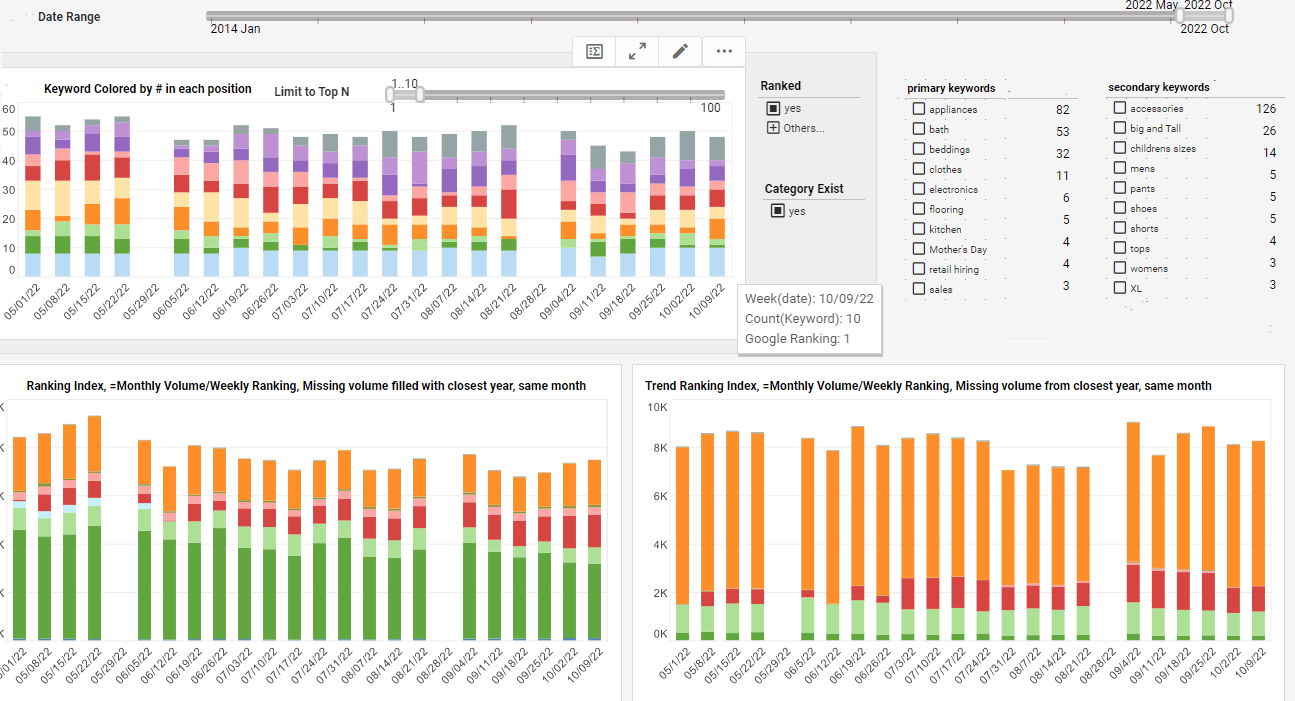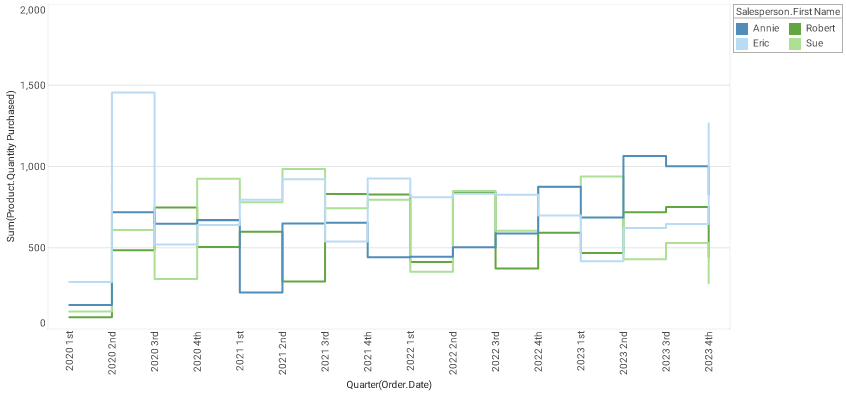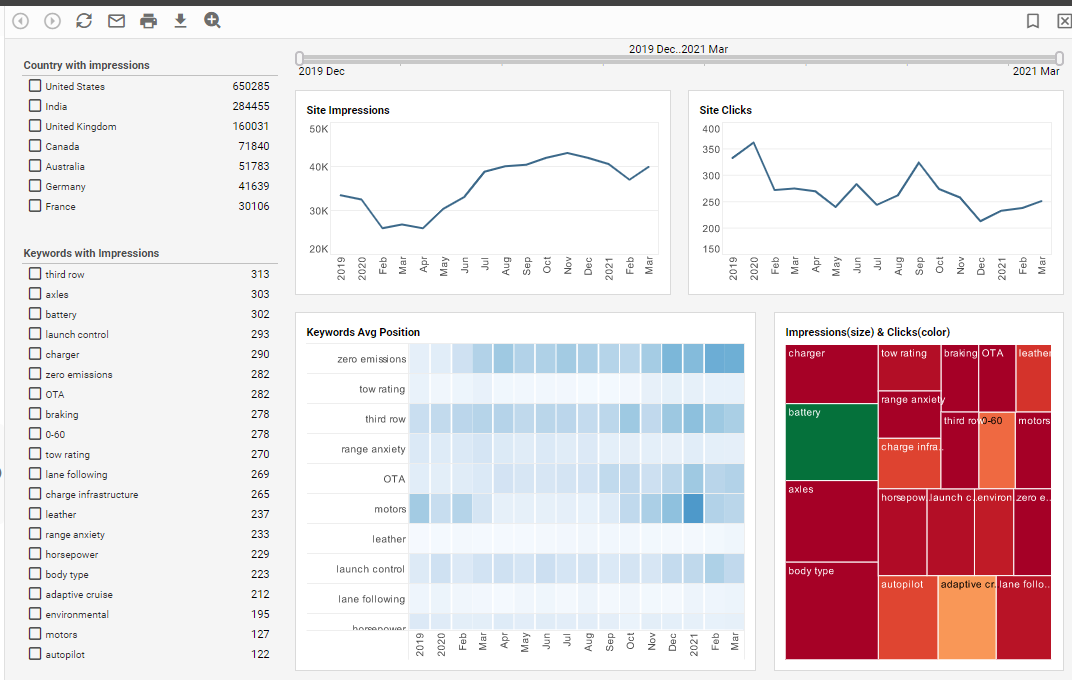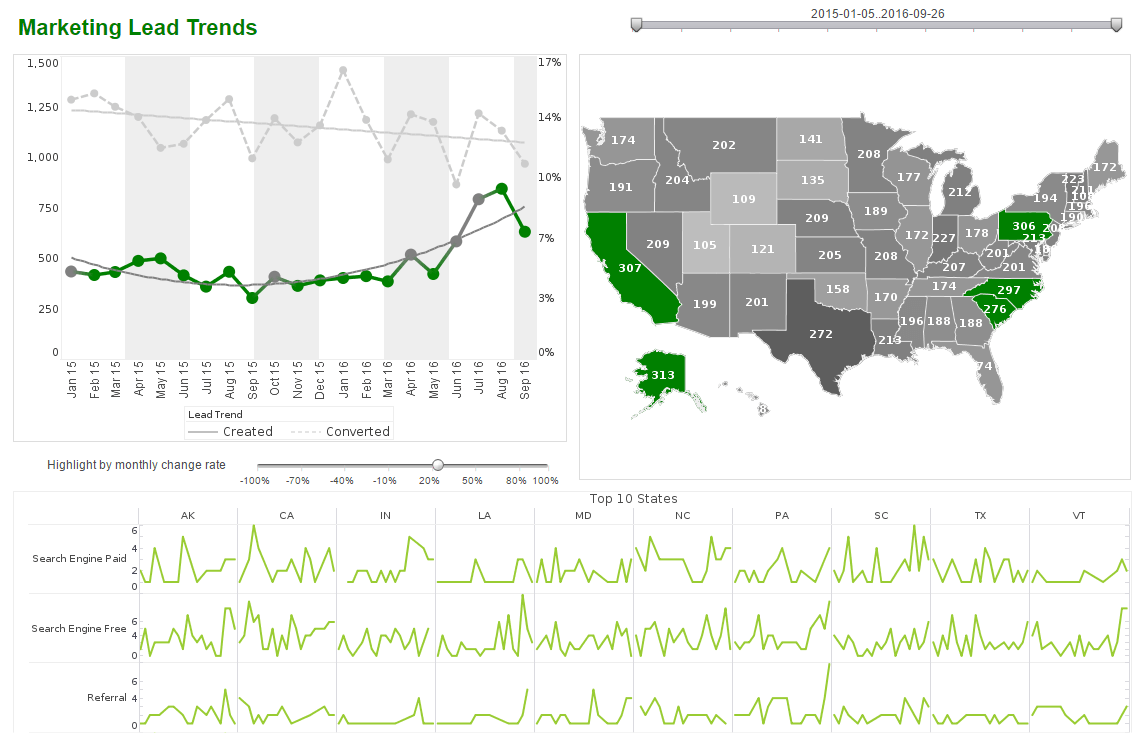Report Generation Tools from InetSoft
InetSoft offers innovative and customizable report generation tools. They are included in InetSoft's flagship platform StyleBI, a complete operational business intelligence software, or as a stand alone reporting tool known as Style Report Enterprise.
InetSoft's report generation tool is a sophisticated, 100% web-based Java reporting tool suitable for organizations seeking production reports, interactive reports, ad hoc reports, and more. It has been recognized by the Java Developers Journal Readers Choice Award for Best Java Reporting Tool.
InetSoft makes reports customizable by allowing each user to drag-and-drop the data that is most important to them and their position in the organization.
Plus, the software is easy to use! It has a simple point and click environment, the ability to grab data from any location in any format, and is interactive so that sophisticated reports are quickly generated.
Generate Customized Reports
- Custom data access adapter
- Data mashup across multi-source data objects
- Rich presentation and report layout library
- Aggregate, grouping, filtering
- Java API for data and report manipulation
- Reshape reports in real time
Innovate and Interact
- Drilldown from any report element to another report or URL
- Real-time viewing or queued reports
- Export to Excel, PowerPoint, PDF, RTF-Word, CSV, PostScript, Text, and SVG
- Alerts for exceptions or business-rule triggers
- In-report sorting, filtering, hide/unhide


Report Generation Software at Work
InetSoft's report generation software provides reports that are tailored to a specific user, which can be highly effective and useful for action. Custom reports aid in strategizing business plans by providing what-if analyses, up to the minute information, and displaying the data that is most crucial to the user at that moment. The user controls the simple to use interface and can generate sophisticated reports in minutes, not hours.
Users may also reshape reports in real time and format each report to look how they want using InetSoft's exceptional library of reports. These reports are also shared throughout the organization in real time and each report can be altered to show the data suitable for each position in the organization. Customized reports keep everyone on the same page and minimize performance bottlenecks.
Most importantly, custom report generation software allow users to gauge the health of their business, and in turn, make the best possible business decisions.
Report Generation Tools Review
"We selected InetSoft's Style Report Professional for a time-tested, dependable publishing engine and a powerful, yet easy-to-use report designer that would save resources associated with internal development of publishing capabilities and client customization requests. We were looking for a Java-based publishing solution that could be easily integrated with our own. We have been pleased with deployment, and the reporting software’s part in our ability to help companies of all sizes realize cost reduction and revenue acceleration associated with critical configuration and accurate quoting solutions."
- Craig Christiansen, President-Technology at FPX

How Stone Quarry Restorer Switched From FineReport To InetSoft
Edgestone Quarry Preservation Ltd. is a company dedicated to the niche industry of historical stone quarry restoration. Unlike traditional quarries that focus on extracting stone for commercial use, Edgestone works with heritage organizations, municipalities, and conservation groups to restore and maintain quarries that have cultural, ecological, or geological significance. These sites, often centuries old, serve as windows into past construction practices, provide habitats for rare species, and act as educational resources for schools and universities. Operating in such an obscure field requires balancing environmental stewardship, cultural preservation, and logistical project management. For years, Edgestone relied on FineReport to manage its reporting needs. The software was used to compile data from site surveys, financial records, and project updates into structured reports for stakeholders. However, as the company expanded its projects and began working with more diverse partners, FineReport’s limitations became apparent. To meet its growing need for integration, analytics, and interactive reporting, Edgestone made the decision to switch to InetSoft, marking a significant leap forward in how it managed and communicated its mission.
FineReport initially seemed like a strong fit for Edgestone because it simplified report design and distribution. The company’s staff could build forms and reports that summarized project progress, financial expenditures, and compliance documentation. But the system was largely confined to static reporting and struggled to integrate external datasets that became increasingly important for Edgestone’s operations. For instance, many projects required blending geological survey data, environmental monitoring inputs, community engagement feedback, and financial forecasts into a single comprehensive view. With FineReport, these datasets often had to be manually combined into spreadsheets before reporting, consuming valuable time and raising the risk of errors. InetSoft, with its robust data mashup and integration capabilities, addressed this pain point directly. By connecting multiple sources seamlessly, the company could automatically populate dashboards with live data, eliminating manual bottlenecks and ensuring accuracy.
One of the biggest transformations with InetSoft came in how Edgestone tracked project milestones and accomplishments. FineReport could generate end-of-month or quarterly summaries, but these static reports often left managers with a limited perspective. Project leaders needed to know, in real time, whether excavation safety standards were being met, whether environmental restoration phases were progressing on schedule, and whether budgets were being adhered to. InetSoft provided interactive dashboards that displayed progress against key metrics at any moment. If vegetation replanting around a restored quarry lagged behind schedule, managers could see it instantly and reallocate resources. Likewise, if community engagement goals—such as the number of educational tours conducted—fell short, the dashboards alerted the team before the project risked reputational harm. This level of responsiveness was a major improvement over FineReport’s more rigid, retrospective approach.
Financial oversight also benefited from the switch. Many of Edgestone’s projects are funded through a mix of public grants, conservation endowments, and private partnerships. Funders demand detailed accountability for how money is spent and what outcomes it achieves. FineReport could produce standard expenditure reports, but it was difficult to link financial data with tangible results. InetSoft allowed Edgestone to build dashboards that integrated financial inputs with project outcomes. For example, funders could see not only how much money was spent on stone stabilization but also how much quarry wall was successfully preserved as a result. This direct connection between funds and accomplishments built stronger trust with partners and made Edgestone more competitive in winning future grants. It also improved internal financial planning, as the company could model how changes in resource allocation might affect timelines and deliverables.
Another area where InetSoft made a difference was compliance and safety reporting. Quarry restoration involves strict regulations regarding worker safety, environmental standards, and heritage preservation guidelines. FineReport required significant manual effort to compile compliance data from different departments. InetSoft, on the other hand, automated much of this process by connecting directly with safety logs, environmental monitoring devices, and project management tools. Dashboards could be configured to flag potential compliance risks in real time—for instance, if air quality readings during a restoration effort exceeded thresholds, or if equipment inspections fell behind schedule. This not only reduced compliance risks but also created a culture of proactive safety and environmental responsibility.
Externally, InetSoft gave Edgestone a more polished and interactive way to communicate with diverse stakeholders. Quarry preservation attracts interest from multiple groups, each with different needs. Heritage organizations wanted detailed geological and historical documentation, while environmental groups focused on biodiversity indicators, and local communities cared about recreational or educational opportunities created by restored quarries. FineReport’s static documents forced Edgestone to create multiple versions of reports for different audiences, a time-consuming and repetitive task. InetSoft allowed the company to build dynamic dashboards that stakeholders could tailor to their own interests. A conservationist could filter to view species monitoring data, while a local government official could focus on cost management and project timelines. This flexibility made communication more efficient and gave stakeholders a greater sense of involvement.
InetSoft also introduced predictive analytics to Edgestone’s operations, something FineReport simply did not provide. Restoring quarries is a long-term endeavor, with projects spanning years or even decades. Being able to anticipate challenges was critical for sustainability. By analyzing historical data alongside environmental models, InetSoft helped Edgestone forecast risks such as erosion patterns, funding shortfalls, or delays due to seasonal weather conditions. For example, the system could predict that heavy rainfall in a particular season might compromise stabilization work, allowing the team to plan reinforcements in advance. Similarly, predictive financial modeling enabled the company to anticipate when cash flow might tighten and adjust spending accordingly. This forward-looking approach allowed Edgestone to shift from reactive problem-solving to proactive strategy.
The cultural impact of the switch was just as significant as the technical one. With FineReport, employees often felt that reporting was an afterthought—something done for regulators and funders rather than for the company’s own growth. InetSoft reframed reporting as a continuous, interactive process that helped everyone see their impact in real time. Field workers monitoring stone structures could immediately see their data reflected in dashboards, while educational coordinators tracking community outreach could watch their contributions accumulate into organizational achievements. This transparency boosted morale, as employees felt their work was recognized and valued. It also fostered collaboration, since departments could more easily see how their efforts interrelated.
Of course, moving from FineReport to InetSoft was not without challenges. The initial learning curve was steep for some employees, especially those who were comfortable with FineReport’s straightforward report templates. Edgestone’s leadership invested in training sessions and gradually introduced staff to InetSoft’s features through real-world examples. For instance, a workshop demonstrated how field survey data could instantly populate visual dashboards instead of waiting weeks for manual compilation. Once employees experienced the time savings and clarity firsthand, adoption accelerated. Over time, InetSoft became so embedded in workflows that many wondered how the company had ever managed with static reports alone.
Externally, Edgestone’s enhanced reporting capabilities boosted its reputation in the heritage conservation community. The ability to present interactive, transparent dashboards set it apart from competitors still relying on traditional reports. This credibility helped secure new partnerships with universities, NGOs, and government agencies eager to collaborate with a forward-thinking organization. InetSoft’s reporting capabilities also opened doors to new funding streams, as grant-making bodies increasingly valued measurable impact supported by real-time data. By demonstrating not only what they accomplished but how they tracked and verified it, Edgestone positioned itself as a model of accountability and innovation in an obscure yet important industry.
In the long term, Edgestone plans to expand its use of InetSoft by integrating emerging technologies. Discussions are underway to connect drone imaging data directly to dashboards, enabling visual confirmation of restoration progress. There are also plans to link visitor engagement metrics from digital apps into community-focused dashboards, showing how educational outreach contributes to preservation goals. These innovations would not have been feasible with FineReport but are natural extensions of InetSoft’s flexible platform. By embracing these possibilities, Edgestone ensures it will remain at the forefront of quarry preservation while continually improving transparency and impact.
Ultimately, Edgestone Quarry Preservation Ltd.’s transition from FineReport to InetSoft was more than a change of software; it was a transformation of philosophy. The company moved from static, backward-looking reports to dynamic, forward-looking dashboards that informed decisions, recognized accomplishments, and engaged stakeholders. InetSoft provided the flexibility to integrate diverse datasets, the power to analyze and predict outcomes, and the polish to communicate effectively with varied audiences. For an organization in such a specialized and obscure field, this shift was vital to sustaining growth and securing trust. By embracing InetSoft, Edgestone not only improved its internal efficiency but also reinforced its role as a guardian of cultural and environmental heritage. The story demonstrates that even in industries far from the mainstream, the intelligent use of business intelligence can be the key to thriving in a complex and demanding world.

